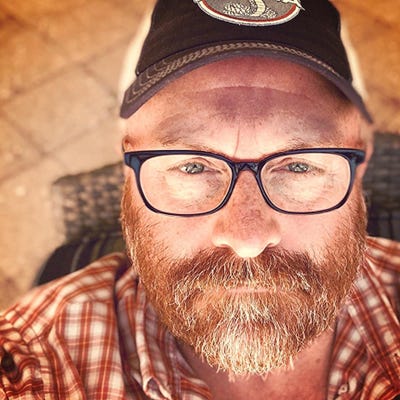Packaged Water is Everywhere
Sales and sustainability are powered by the packaging of popular branded drinks. Here’s why and how.
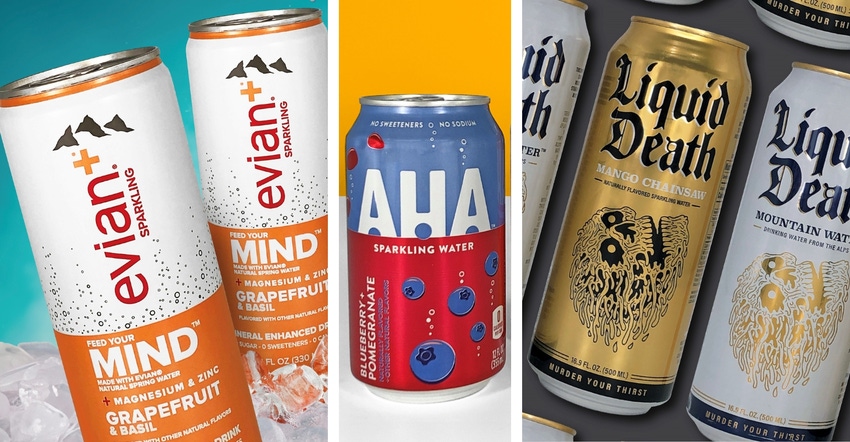
How’s this for a popular drink? In 2017, the Beverage Marketing Corp. announced that the US had a new favorite beverage. And it was water. In fact, current data shows that water still has the largest market share when compared to coffee, tea, milk, and sweetened beverages.
The stats regarding water vs. soft drinks are compelling. In 1988, Americans drank more than 50 gallons of soda and only 30 gallons of water yearly. But this vast disparity was tied to a significant rise in obesity and diabetes. Emerging generations — Millennials and Gen Z, in particular — were making healthier choices. And today, consumption of water vs. soda has reversed, with 58% of Americans drinking nearly 60 gallons of water; a 20-gallon increase since 1988.
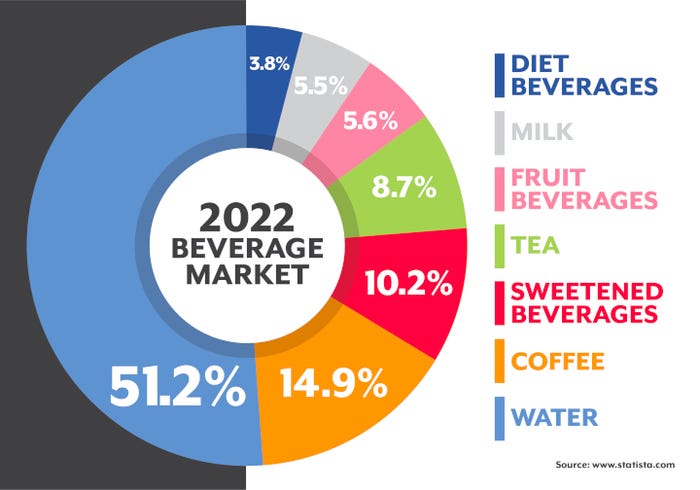
I see this shift from soda in my life every day. My company has a staff of Millennial and Gen Z designers who each consume about six bottles of water … daily. The sodas and energy drinks (mostly for us Gen Xers) are consumed at a much slower rate. Full transparency, I personally went from guzzling multiple diet sodas to now drinking bottled water. Among us water guzzlers, many prefer to bring their own reusable water bottle to fill at our watering station. But more on reusable bottles later.
Generational preference is just one attribute driving water’s popularity. Let’s take a look at some of the things water has going for it … and against it.
The growing popularity of water.
As Grand View Research reported, the global bottled water market size, valued at $283 billion in 2021, is expected to expand at a compound annual growth rate (CAGR) of 6.7% from 2022 to 2030 globally, and 6% annually in the US alone.
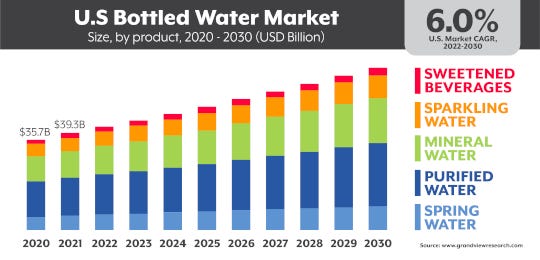
In spite of pressure to move away from single-serve plastics, bottled water is on a solid path for growth. And it’s not just because consumers have become more health conscious. What it really boils down to is the power of marketing. As one source from Serious Eats put it:
“Looking back over the last four decades, we can chart water’s remarkable rise to the top through several distinct stages. First it was sold, then it was normalized, and then it was commoditized. Now, it’s even being enhanced and augmented.”
The evolution of the market — and the ensuing enhancements — is exciting to see. From functional waters to specific brand augmentation, the market continues to diversify.
Who is enhancing the water market?
Let’s look at some successes in the water market.
In the Functional Water Category: With a greater shift to health, wellness, and saving time, functional water is a winning entry in the water category. These brands include ingredients like protein, amino acids, vitamins, and minerals for improved holistic health. Functional water has gained popularity for convenience, perceived health benefits, and improved flavor over tap water. The market share increase says it all: according to Precedence Research, the $129.3 billion global functional beverages market could grow at an 8.94% CAGR from 2022 to 2030. And interest is rising.

Brand Specific: One successful example of an augmented water is Liquid Death, a popular brand with the tagline, Murder Your Thirst. Taking a page out of the energy drinks market with edgy, in-your-face packaging and a strong social media presence, Liquid Death is currently experiencing a huge surge in popularity. The water brand’s TikTok marketing has made it the most followed beverage brand in the US (4.1 million followers), while its Instagram boasts a whopping 2.2 million. So popular, in fact, that the company was recently valued at $700 million.
Reality Check: As a packaging guy, I love this brand. The packaging designs are eye-catching, unapologetic, and unique. Plus, its branding and social media presence greatly reflect its packaging. And, best of all, they use aluminum — not plastic — and aluminum is infinitely recyclable. But, while aluminum cans might indeed mean less ocean waste, they come with their own eco-price tag. The production of each can pumps about twice as much carbon into the atmosphere as plastic bottles. Now let’s get back to my favorite subject: packaging.
Packaging is a major influencer in water sales.
What are consumers looking for in packaging in 2023? According to Mintel, minimalist messaging tops the list. Fatigued consumers are drowning in on-pack messaging (pun intended). In 2023 and forward, we’ll see communication reduced to the essential benefits that matter most. The goal? To optimize budgets that are stretched by inflation and supply-chain challenges. Plus, minimalism allows people to easily find products that fit their needs and save money as the costs of living continue to rise.
In spite of recessionary pressure, there is a coming trend around gifting unique premium items, such as sparkling water, in personalized packaging. This can include hand-crafted wooden boxes, and innovative wrappers with beautiful labels. As these products are easy to purchase via online retail stores, the thriving ecommerce industry is also creating a positive outlook for the market.
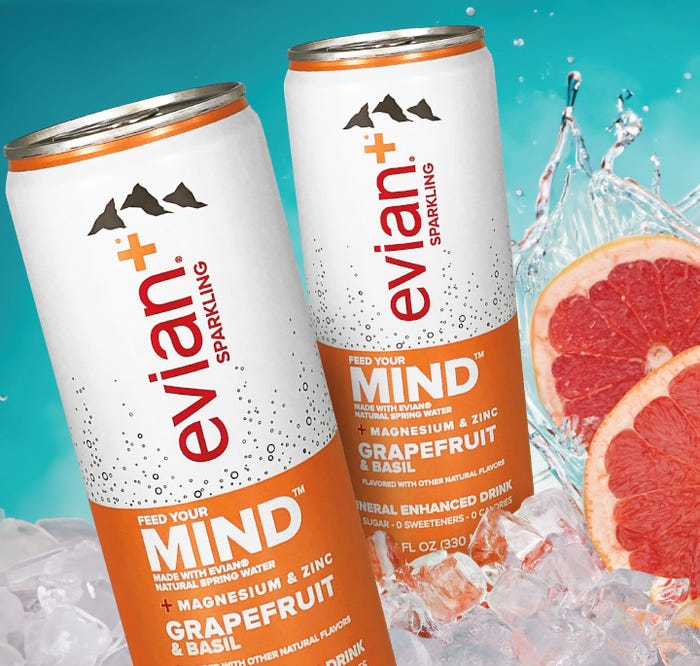
Going forward, people will look for brands that keep on-pack messaging simple and save storytelling for websites, social media, and marketing. They’ll also keep searching for brands that compel them to choose their products. Vibrant, edgy, colorful packaging design plays a huge role.
In-your-face packaging details flat and sparkling brands.
Perhaps not all will be quite as edgy as Liquid Death, other water brands will benefit from refreshing packaging in the coming year. While many flat-water brands convey cleanliness and freshness, bright colors, unique fonts, and cohesive marketing strategies will continue to rise. Sparkling water, on the other hand, gets the chance to play more with vibrancy and distinctiveness, so we can expect that to be elevated in the near future as well.
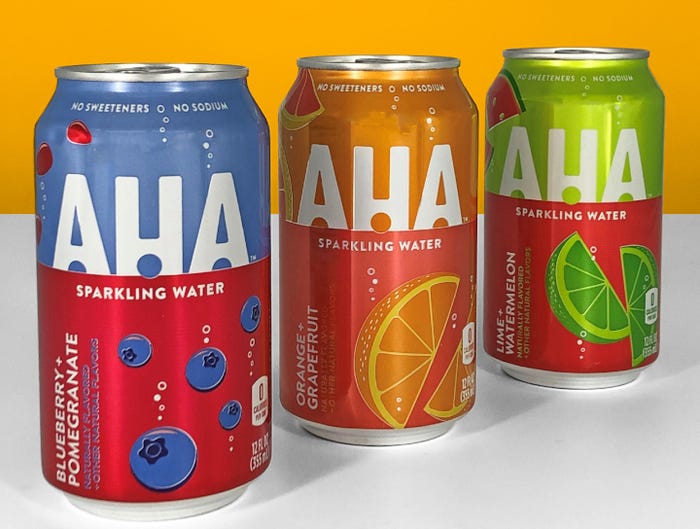
So how does sustainability play into water’s recent surge in popularity?
Sustainability for water packaging in 2023 and beyond.
Consumer indoctrination around recycling has made it mandatory for brands to step up to the recycling challenge. This, of course, includes water. But here’s a sad fact; for every six water bottles purchased, only one is actually recycled, with only 9% of all plastics recycled, according to Greenpeace. Quite frankly, the US lags behind other first-world nations in sorting capabilities and the infrastructure needed to make recycling work (fun fact: Germany is #1). But what innovations and packaging alternatives are ahead for 2023?
Water packaging alternatives flow.
Innovation and the need for water hydration is already changing the scope of the industry, with water dispenser companies, like Elkay, leading the charge. Since launching more than 10 years ago, Elkay ezH2O bottle fillers have saved more than 40 billion single-use plastic bottles from ending up in landfills and have become a highly sought-after product across many industries.
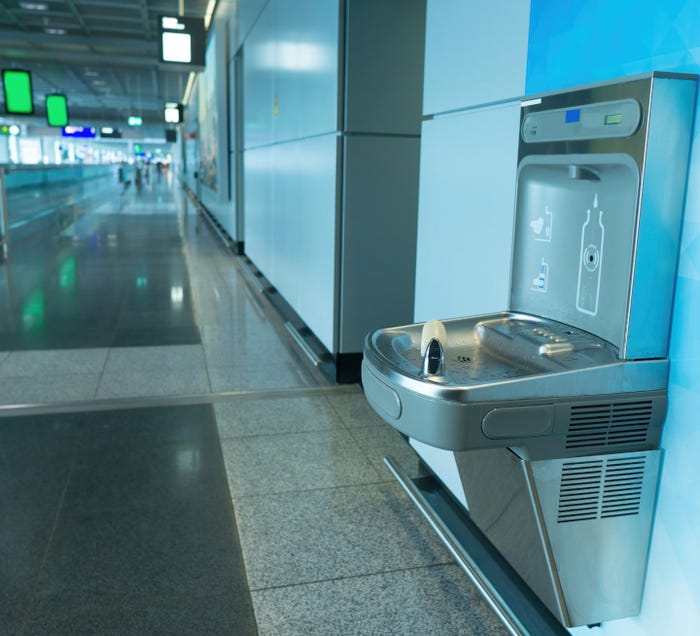
From gyms, libraries, and stadiums to offices, airports, and schools — Elkay’s are everywhere, and with good reason. They filter regular-old tap water into a clean drinking solution. Which leads to another trend: the steep increase in reusable water bottles.
When you factor in sustainability issues, why are people still choosing bottled water over tap? Infrastructure and tap water quality are definitely at play.
Drinking water in the US gets a below-average grade.
Every four years, the American Society of Engineers (ASCE) publishes its Infrastructure Report Card. In 2021, US infrastructure got a C- grade for our drinking water, while wastewater earned a D due to aging water and wastewater pipes and facilities that are unsafe and past capacity.
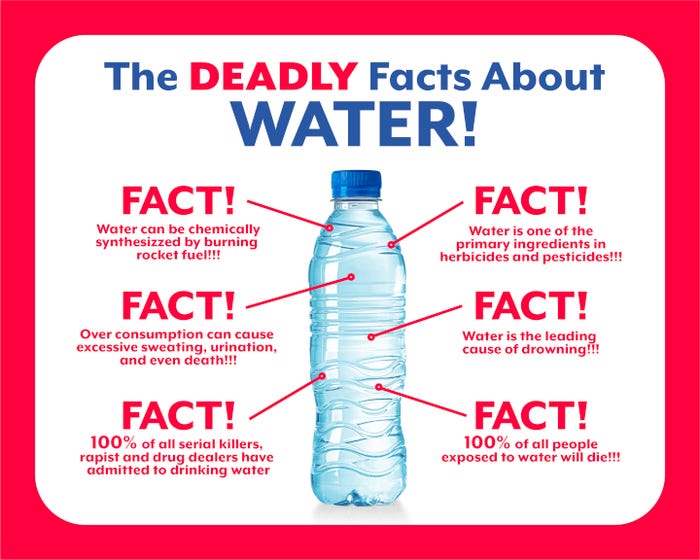
In addition to infrastructure shortcomings, water shortages in the US are also a huge issue:
• More than 99% of California is in a 3-year drought. In 2021, residents were ordered to cut water usage by 15%. A November 2022 report noted that 70 water agencies in California will face water shortages into 2023.
• The Colorado River provides drinking water to more than 40 million people across seven states. The water line has dropped so dramatically that the Biden administration has given the affected seven states a deadline to tackle the emergency. Until measures are in place to improve the infrastructure, Arizona, Nevada, and New Mexico will see water supplies drop by 21%, 8%, and 7% respectively.

The future of water and its packaging.
We’ve reviewed top trends for water packaging, sustainability, and functional ingredients in the water itself. But what else can we expect for water in 2023? Obviously, there is a lot of work that can be done in the water realm. I truly hope that the future holds “a-ha” moments that help us secure better, cleaner, fresher water for everyone. I also hope more brands embrace innovations from which the world will benefit.
Tom Newmaster has 25 years of experience in branding and package design for consumer packaged goods. From 1998 to 2016, he led creative and won awards for The Hershey Co., Pfizer, Stoner Car Care, and Zippo. He has helped launch new products across multiple categories including fresh produce, frozen food, confectionery, household cleaning, and nutritional supplements, to name a few.
In 2017, Newmaster started FORCEpkg to take branding, design, and innovation to the next level, and he has become a leading voice in the branding and packaging industry, writing for top trade and mainstream business publications.
Known as “Mr. Reality Check,” Newmaster has become a unique voice for his industry. Calling out the truths in popular narratives, Newmaster tackles everything from packaging trends and sustainability to packaging’s role in pollution and praising innovators.
About the Author(s)
You May Also Like

